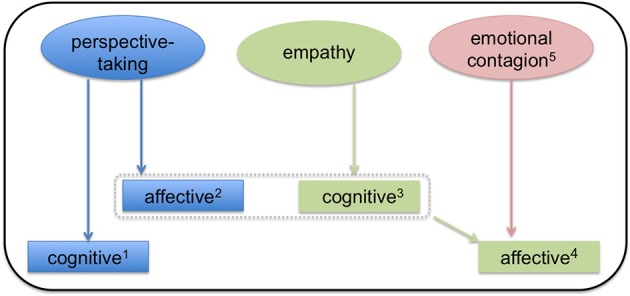Figure 1.

A model of the relationship between empathy and perspective-taking. In this model, both perspective-taking and empathy are subdivided into cognitive and affective components. 1Cognitive perspective-taking refers to the ability to make inferences about others' thoughts and beliefs. 2Affective perspective-taking is the ability to make inferences about others' emotions and feelings. Affective-perspective taking is thus very closely related to cognitive empathy (illustrated by the dashed box). 3Cognitive empathy is ability to model another agent's emotions. It may be a prerequisite to affective empathy. 4Affective empathy results from a combination of cognitive empathy and emotional contagion. Here, the perceiver not only models the other agent's emotion, but also adopts it (i.e., affect sharing). Affect sharing thus distinguishes affective empathy from affective perspective-taking. 5Emotional contagion refers to the process by which emotions in one agent trigger isomorphic emotions in another agent. Emotional contagion may occur without conscious awareness.
